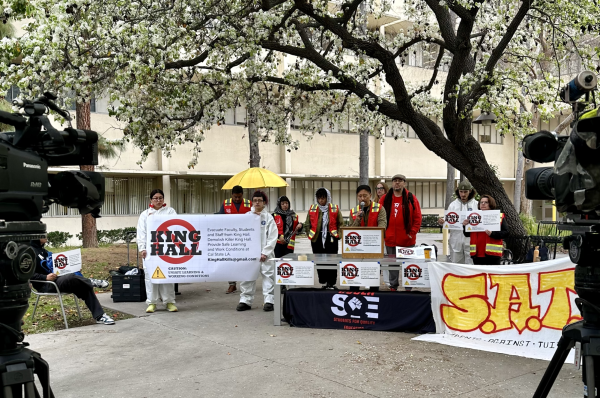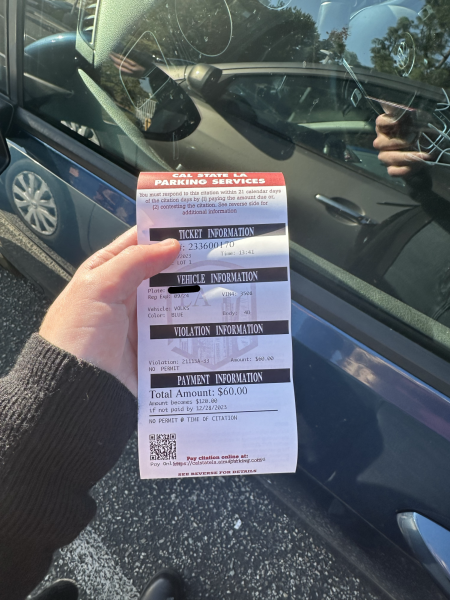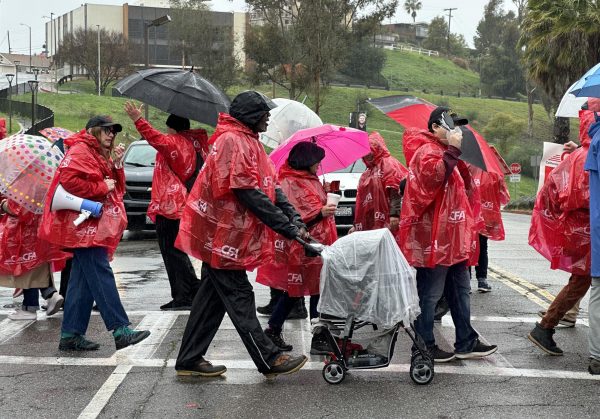Analysis: The Political Commentary of ‘Watchmen’
A continued analysis of the comic’s legacy in the new HBO show and its political themes.
Photo by Ilya S. Savenok/Getty Images for HBO
View of the space during HBO’s “Watchmen” Party During NYCC.
The following contains major spoilers for HBO’s “Watchmen” through episode 7: “An Almost Religious Awe”
The “Watchmen” comic is a deconstruction of the superhero genre; the HBO adaptation takes it a step further deconstructing superheroes and villains through a racial lens.
The Hero
As written previously, HBO’s indirect sequel to the 1986 comic, expands the mythology of the source material; the alternate past of the graphic novel becomes the alternate present in the TV series. The show takes it up another notch, subverting “Watchmen” lore to match its own themes.
In the comic, the world’s first masked vigilante is Hooded Justice. The mysterious character is the only “costumed adventurer” in the graphic novel whose real identity is never confirmed. The show definitively resolves this mystery in a plot twist. Hooded Justice is revealed to be William Reeves, the enigmatic grandfather of protagonist Angela Abar.
Taking place through a drug-induced flashback, Reeves’s heroic origin starts with him graduating as the only person of color from the New York police academy in the 1930s. After arresting a criminal figure involved in a deep conspiracy, Reeves is nearly lynched to death by the corrupt white officers of his precinct. Right before he dies, Reeve’s assailants cut him loose and threaten him to not interfere again, otherwise they’ll kill him.
After the near-death experience, the anguished and wrathful Reeves becomes Hooded Justice to fight the “vast and insidious conspiracy” perpetuated by white supremacists.
To fully grasp what the show is doing, Hooded Justice should be juxtaposed with classic superheroes.
As a child, Bruce Wayne was frightened by bats, and witnessed the murder of his parents. As Batman, he wears a bat costume as a symbol of fear to terrify his enemies.
Reeves witnessed the loss of his family and community in the Tulsa Race Massacre as a young boy. As an adult, he’s nearly killed by his own fellow officers, who are later revealed to be secret members of the KKK. In costume, he wears the same hood and noose that were used in his lynching. Reeves takes a historical symbol of racial injustice and wields it as his persona of fighting hatred parallel to how Batman uses an old fear to terrorize evil. Plus, both heroes fight in vengeance for their deceased parents.
There’s also a sharp contrast between Hooded Justice and pop culture’s classic heroes. The first superheroes in comics were white, and some were symbols of America, i.e. Wonder Woman, Superman and Captain America. Heroes of color were excluded from this prestigious lineup in the early years of the genre. Characters of color that did appear in that era were often portrayed as racial caricatures including in WWII and anti-communist propaganda; as the heroes often fought on behalf of the United States or its values.
In a couple of examples provided by Ranker, Bucky Barnes-Captain America’s sidekick-led a team of young WWII heroes in a 1940’s comic. Among their ranks, was a black character named Whitewash Jones, who was depicted in a stereotypical manner; in one appearance Jones said, “I is also good on de watermelon!” In a 1965 comic, Wonder Woman fights Egg Fu, a Chinese communist agent that’s a giant humanoid egg. Fu is drawn with racist facial features and speaks with an exaggerated accent.
The first superhero in the world of “Watchmen” is black. Though, Reeves’s wife June points out to him, “If you wanna stay a hero, [the white] townsfolk gonna need to think one of their own’s under” the hood. As part of his costume, Reeves applies white makeup on his eyes, the only part of his body left uncovered, in order to be accepted as a savior to the world that’s rejected his true identity.
Reeves is also LGBTQ, having an affair with fellow male vigilante Captain Metropolis, unbeknownst to his wife and son. The show illustrates Reeves hiding his identities not just behind the mask but even as a civilian.
“I mean this is a guy who inspired two generations of heroes … but he had to hide who he was because white men in masks are heroes, but black men in masks are scary,” said Laurie Blake, an original “Watchmen” comic character, when she discovered Reeve’s alter ego.
“Thank God times have changed,” replied Jane Crawford, widow of the Tulsa chief of police. While her line was delivered in a sincere manner the show seemingly included it sarcastically.
The Villains
Like previous episodes, the show lambasts the alt right. White supremacist organization, the Seventh Kavalry, threaten the show’s main setting, Tulsa, Oklahoma. It goes further with this, as the City’s Chief of Police Judd Crawford and Senator Joe Keene are secret leaders of the terrorist group. The closeted supremacists eventually revealing themselves occurs figuratively and literally as Abar discovers a KKK costume in the closet of the police chief.
When confronting Blake, Keene goes on a villainous monologue justifying the Kavarly’s actions. “We’re not racist. We’re about restoring balance in those times when our country forgets the principles upon which it was founded. Because the scales have tipped way too far. And it is extremely difficult to be a white man in America right now.”
The Seventh Kavalry intends on eliminating the god-like being Dr. Manhattan and robbing his powers for them to use. “Can you imagine that kind of power in the hands of white supremacists?” asked Lady Trieu, the trillionaire resourcing the counter initiative to the Kavalry’s operation. “Watchmen” warns that systematic racism and white nationalism are a real threat, infiltrating our institutions and continually clawing for more power.
In an inverted twist, the story comes full circle. Abar’s husband, Calvin, who is a person of color, is in fact Dr. Manhattan in shapeshifter disguise. Abar’s grandfather disguised himself as a white vigilante to fight white supremacists; while her husband, a white man turned blue-skinned super being, disguised himself as a black man–who is the primary target of the Kavalry.
The 2019 rendition of “Watchmen” throws identity politics and superheroes in a blender to make a polarizing cocktail. Some will enjoy the taste; others may find it hard to stomach.














